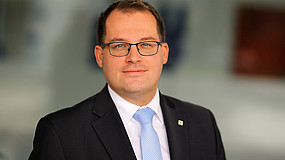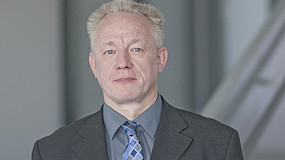Mexican exchange students took part in the project work in the field of mechatronics.

"We can only see a short distance ahead, but we can see plenty there that needs to be done."
Alan M. Turing, pioneer of modern information and computer technology
In his spirit, five Mexican exchange students from the "Instituto Tecnologico de Monterrey" set about their project work in the field of mechatronics. Two teams, four semester hours per week, one goal: the presentation at the end of the semester, in which their work had to satisfy the questions of the examining professors. On January 11, the time had come at the Institute of Process Engineering, Process Automation and Measurement Technology .
Team 1 conducted experiments on a cylinder filled with water. Liquid is fed into and drained from the body, but the fill level must remain constant. For partners in the chemical industry, reliability in level control is elementary; another example is the cooling of reactors within a nuclear power plant. To ensure that this process runs smoothly, students determine the control parameters for different fill levels.

Team 2's work helped to substantiate the results of a research project currently being conducted by HSZG/IPM and TU Dresden. (funded by the Federal Ministry for Economic Affairs and Energy) The scientists want to use their experiments to find out how to look inside a Castor cask in order to find out what happens inside during the interim storage of the spent fuel rods. Until a final solution is found for the final storage of the radioactive goods, monitoring from the outside to determine the condition is of the utmost importance.
The students experiment with vibration analysis. Up to 468 small cylindrical pins can be installed in a fuel element model; these represent the fuel pellets within a fuel rod. Which natural vibration modes occur with which number of pins tells the researchers whether all the fuel rods in the Castor are still intact or whether changes have occurred.


